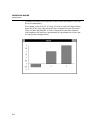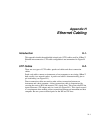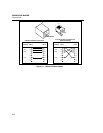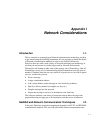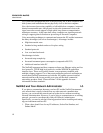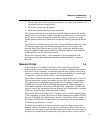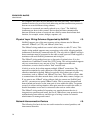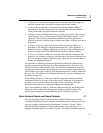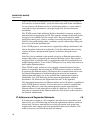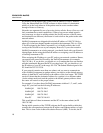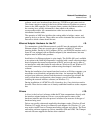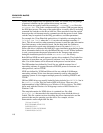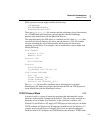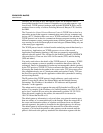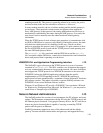
2640A/2645A NetDAQ
Users Manual
I-6
strips off the Frame information around the packet. So, unless you’re doing low-
level analysis of network traffic, you never need to deal with Frame information.
For any protocol, the Packet consists of a destination address, a source address,
some protocol type information, a message length field, and error detection
information.
The TCP/IP protocol adds additional fields to the packet for message sequence
determination and application port ID. The sequence number allows multi-packet
messages to be assembled into the correct order. The port ID specifies which
application running on a system is sending or receiving the message. Support of
port IDs allow multi-tasking within a computer system, with messages being sent
and received from the individual task.
In the TCP/IP protocol, error detection is supported by adding a checksum of the
data in the packet to the end of each packet. Using this checksum, the receiving
system can detect a bad packet and request a re-transmit (using the source
address).
Each Host (device attached to the network wiring) in an Ethernet network has a
unique address that is assigned by the interface hardware vendor. Each vendor is
assigned a block of addresses and it is required that each device produced have a
unique Ethernet address. Users of the TCP/IP protocol very rarely need to know or
deal with the Ethernet address.
When TCP/IP is used, each host is also assigned a unique IP address, but this
address is assigned by the user when the TCP/IP protocol software is initialized.
In contrast to the Ethernet address, IP addresses have a structure that can be used
by Network Management to facilitate breaking the network into segments
(subnets) that make better use of the available data communication capacity
(bandwidth). Use of IP addressing and the network segmentation scheme is
described in “IP Addresses and Segmented Networks” in this appendix.
The relationship between a host's Ethernet address and its IP address is established
by the TCP/IP protocol software. No user interaction is needed to establish this
relationship. However, some network management systems require that the
Ethernet address of each network host be kept in a data base. So, it is sometimes
necessary to communicate the Ethernet addresses of all devices on the network to
the Network Administrator.
IP Addresses and Segmented Networks I-8.
If all networks consisted of a few computers and other devices attached to each
other locally, use of IP addressing and network segmentation schemes would not
be necessary. However, networks have evolved past simple work groups into
campus-wide, inter-campus, and even international interconnect schemes. This
makes it necessary to divide the network into subnets.



